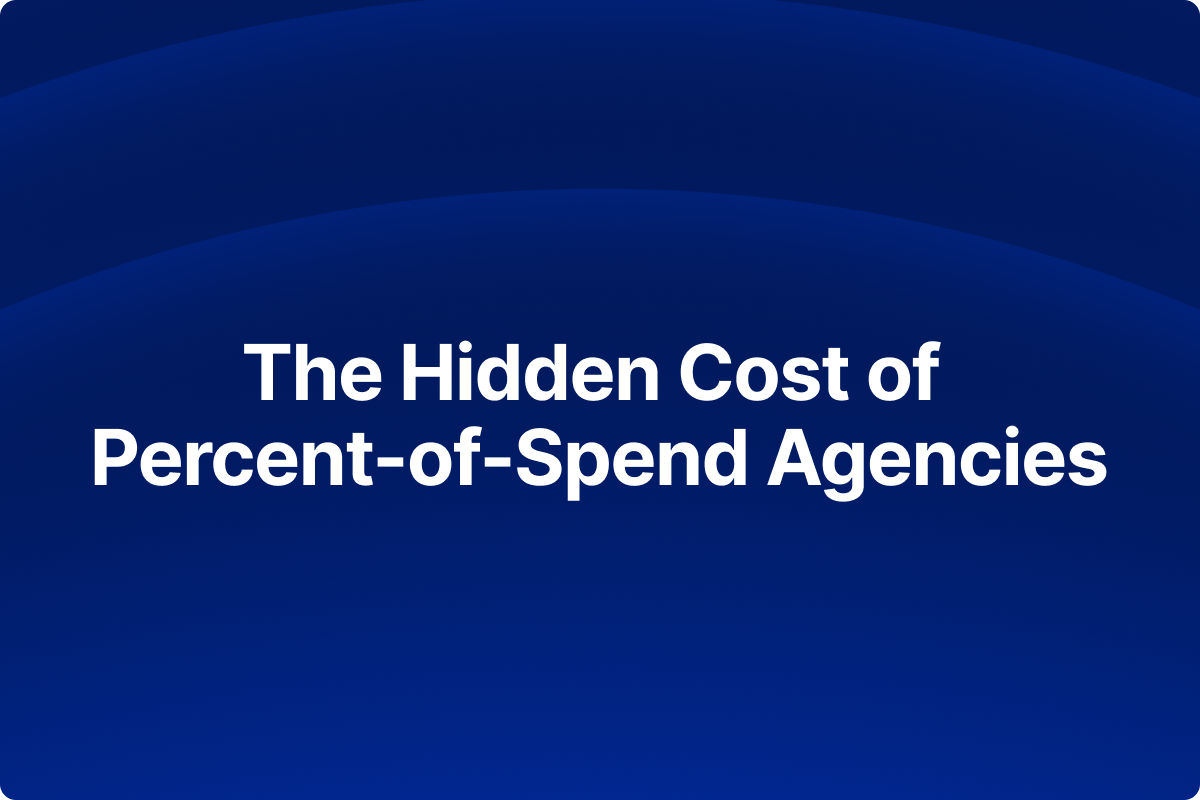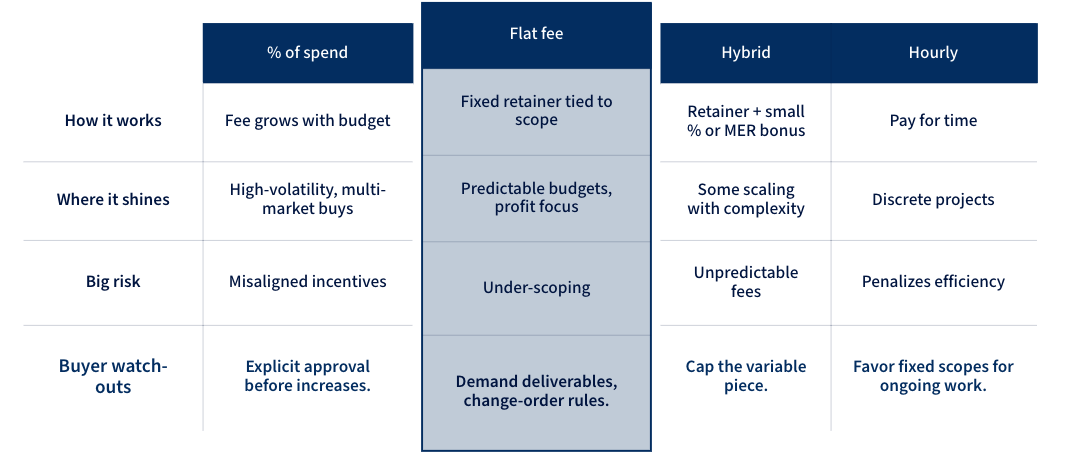
© 2025 Onward. All rights reserved.
Designed by BX Studio

A flat-fee performance marketing agency charges a predictable monthly retainer for strategy, creative testing, and media management with no percentage of ad spend. This aligns incentives to profit and efficiency instead of pushing the budget higher.
Pick flat-fee when you want cost predictability and profit focus. Keep a tight scope, add change-order rules, and measure contribution profit, not only ROAS.
What to actually pay for: Results, senior expertise, setup, and ongoing optimization. Not “spend.”
{{video}}
You pay the agency a portion of your ad budget. When spend goes up, their fee goes up.
When it can still fit: Large, volatile programs with many platforms where workload truly scales with budget.
Buyer watch-out: require explicit approval before any spend increase.
One fixed monthly fee tied to scope. Channels, testing cadence, data work, and SLAs decide the price. Not spend.
Four things worth paying for: results, access to senior brains, setup, and ongoing optimization. Credo calls these out directly.
Price against effort, not spend. Scope drivers:
Guardrails that keep incentives aligned:
Account and data ownership: You own the ad accounts, data pipelines, and BI layer. Use a warehouse + non-proprietary dashboards. Takeaway: no lock-in.
What to instrument:

How much does a flat-fee engagement cost?
It depends on channels, testing cadence, and data scope. Smart agencies map fees to effort drivers rather than spend. Takeaway: price the work, not the wallet.
Does a flat fee mean fewer optimizations?
No, if scoped right. Require weekly optimizations, monthly experiments, and quarterly strategy in the SOW.
Is % of spend ever fair?
Yes, for very complex, volatile programs. If you must, cap the variable piece and require written approval before any increase.
What KPIs should govern a flat-fee model?
Contribution profit, MER, LTV:CAC, and payback. Use ROAS carefully since it ignores margin.
What if we need more creative or channels mid-flight?
Use a change-order ladder tied to channel count and creative volume, not ad spend.